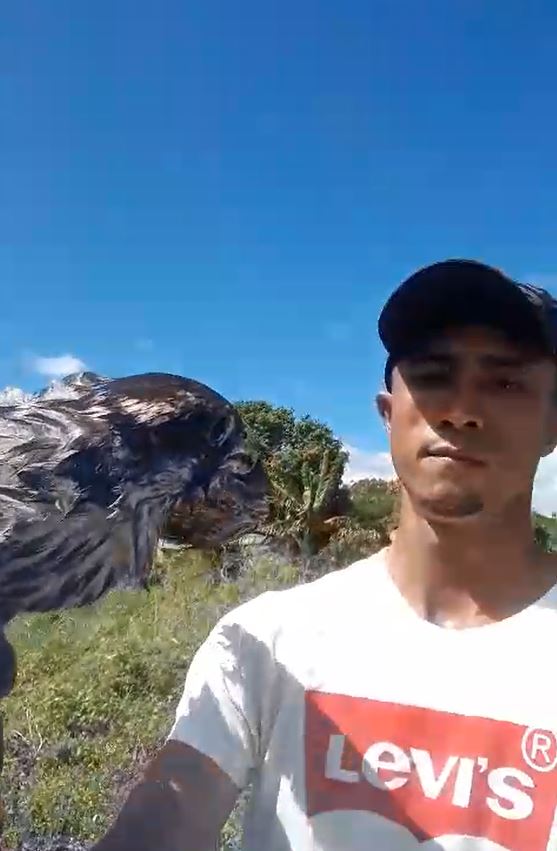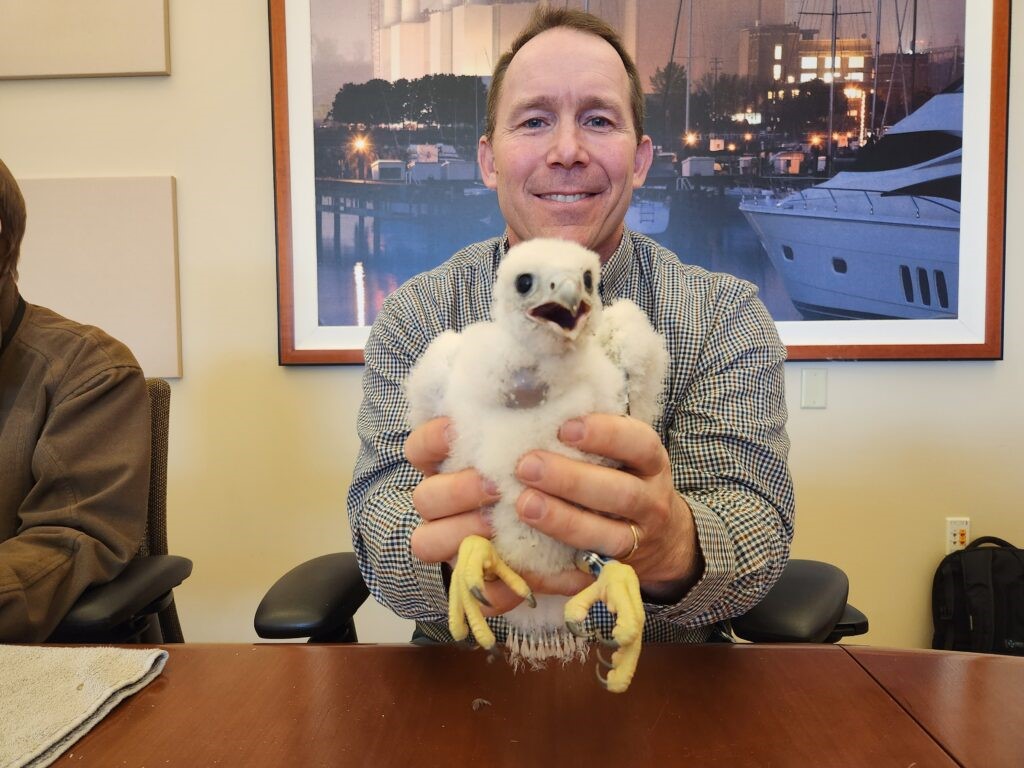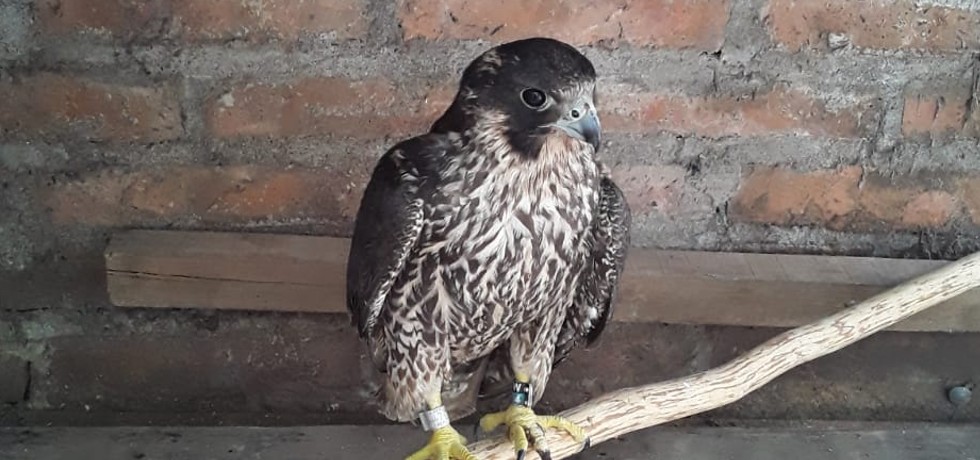The word “peregrine” means “wanderer” in Latin, so perhaps it’s no surprise that one of the peregrine falcons born at a Wisconsin power plant was recently found more than 2,100 miles from home.
Pete, named after Carroll University’s mascot Pio Pete, is a true pioneer — making her way to Sebaco, Nicaragua. Pete hatched in her nest box at We Energies’ Port Washington Generating Station last spring and was recently found injured in Central America.
Misael Sotelo found Pete in a field near his work. Pete could not fly, so Misael took her home and nursed her back to health.

After three weeks, Pete was well enough to be released and flew off into the wilderness once more. Although he had no prior experience helping injured birds, Sotelo says he wouldn’t hesitate to do it all over again.
“I felt great satisfaction seeing how she was flying again,” Sotelo said. “I made sure to release her in a wooded area away from people who might hurt her.”
Identifying Pete
Before he let her go, Sotelo noticed the black and blue band on Pete’s leg that read W/54 and reached out to the Bird Banding Laboratory to learn more about her. That’s how Greg Septon, Wisconsin Public Service (WPS) and We Energies’ peregrine falcon manager, was notified that Pete had been found.
Sightings like this are very rare after a peregrine falcon chick leaves the nest. Peregrine falcons have a high mortality rate in their first year of life. And if they do survive, researchers like Septon never know if a chick will be seen again in their lifetime.
“This remarkable story is why we band the falcon chicks,” Septon explained. “By placing a colored band around a falcon’s leg, birders around the world are able to tell us when they are spotted in the wild.”
The utilities’ connection to this incredible falcon goes beyond the Port Washington nest box. We Energies employee Mike Grisar helped band Pete, and he just happens to be a graduate of Carroll University. To say he’s proud of this full-circle moment is an understatement.
“Being able to use my environmental science degree and work for a company that not only is committed to restoring the peregrine falcon population, but is committed to a bright, sustainable future, is a dream come true,” Grisar said.

WPS peregrine falcon program
Pete is not the only WPS and We Energies chick born in 2023 to be spotted recently. Iggy, named after Marquette’s mascot, Iggy the Golden Eagle, and born at the Valley Power Plant, was recently seen in Indiana.
A total of 444 peregrine falcons have been born at WPS and We Energies power plants since the program began in 1992. That means 20% of all peregrine falcons born in Wisconsin during that time hatched at WPS or We Energies facilities, helping the endangered species escape possible extinction.
The countdown is on to the arrival of a new group of chicks in 2024. Watch for updates this spring as WPS and We Energies continue helping peregrine falcons nest and raise their young at power plants across Wisconsin.
